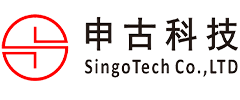What is the Function of the PCB?

Printed circuit boards can be found in almost all types of electronic equipment. These plastic sheets and their embedded components provide the basic technology for everything from computers and cell phones to smartwatches. Circuit connections on the PCB allow current to be routed efficiently between miniaturized components on the board, replacing larger devices and cumbersome wiring.
The function of the circuit board
Depending on the application for which it is designed, a PC board can perform various tasks related to computing, communication, and data transfer. Aside from the tasks it performs, perhaps the most important function of a circuit board is to provide a way to integrate a device's electronics into a compact space.
The PCB allows components to be properly connected to the power supply while being safely isolated. Also, boards are less expensive than other options because they can be designed using digital design tools and manufactured in high volume using factory automation.
The composition of the circuit board
Modern circuit boards are often made of layers of different materials. The individual layers are fused together through a lamination process. The substrate for many boards is fiberglass, which provides a rigid core.
Next is the copper foil layer on one or both sides of the board. A chemical process is then used to define the copper traces that become conductive paths. These traces replace the messy wiring in the point-to-point construction method used in early electronic assemblies.
Add a solder mask to the board to protect and insulate the copper layers. This layer of plastic covers both sides of the board and is usually green. This is followed by a silkscreen layer with letters, numbers, and other identifiers that aid in board assembly.
The components of the circuit board can be attached to the circuit board in a number of ways, including soldering. Some connection methods make use of small holes called through-holes through the circuit board. Their purpose is to allow current to flow from one side of the board to the other.
Basic circuit function
A circuit is a loop of conductive material along which current can travel. When the loop is closed, the current can flow uninterruptedly from a power source (such as a battery) through the conductive material and back to the power source. The design of the circuit is based on the fact that current tries to flow from a higher supply voltage (a measure of electrical potential) to a lower voltage.
Each circuit consists of at least four basic elements.
The first element is the energy source of the AC or DC power supply.
The second element is a conductive material, such as a wire along which energy can travel. This conductive path is called a track or trace.
The third element is the load, which consists of at least one component that consumes some power to perform a task or operation.
The fourth and final element is at least one controller or switches to control the flow of electricity.
The function of PCB assembly
When you insert a load into a closed path in a circuit, the load can use current to perform operations that require power. For example, a light-emitting diode (LED) component can light up when power flows through the circuit it is plugged into. Loads need to dissipate energy, as power overloads can damage connected components.
The most important components on the board include:
Battery: Provides power for the circuit, usually through a double-ended device to provide the voltage difference between two points in the circuit
Capacitor: A battery-like component that quickly holds or discharges a charge
Diodes: Control current flow on a circuit board by forcing it to flow in one direction
Inductors: store energy in current as magnetic energy
IC (Integrated circuit): A chip that may contain many miniaturized forms of circuits and components and often performs a specific function
LED (Light emitting diode): Small lights on the circuit board used to provide visual feedback
Resistor: Regulates the flow of current by providing resistance
Switch: Either block current or allows current to flow, depending on whether it is closed or open
Transistor: A switch controlled by an electrical signal
Each component on the board performs a specific task or set of tasks determined by the functionality of the entire PCB. Some components, such as transistors and capacitors, work directly on current. They act as building blocks in more complex assemblies called integrated circuits.
The functions of PCB have been introduced above. If you have any questions or want to customize PCB printing boards, please contact us.
Singo is a professional custom PCB board manufacturer. We are mainly engaged in PCB assembly and OEM/ODM electronic manufacturing services since 2006. The products involve home appliances, digital products, industrial control, and medical equipment. After years of hard work, we have established long-term cooperative relations with some internationally renowned companies.

